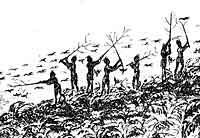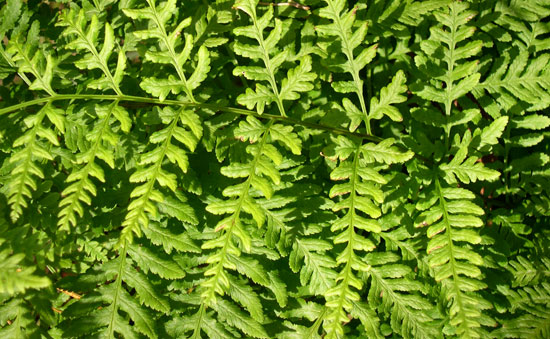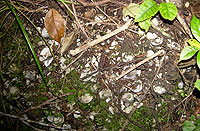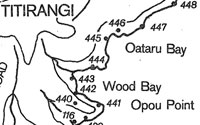

Killing godwits or kuaka as they flew over the saddle at the Green Bay end of the Whau portage.
from J. White, The Ancient History of the Maori, 6 Volumes (Government Printer: Wellington), 1887-1891.
Download a PDF of other ancient Green Bay scenes by John White.
B. W. Hayward and J. T. Diamond, Prehistoric Archaeological Sites of the Waitakere Ranges and West Auckland, New Zealand, Auckland Regional Authority, 1978.
Manukau Habour Foreshore Management Plan PDF
Annette Brown, Lorraine Wilson and Rona Walker, The 1990 Blockhouse Bay Settlers' Handbook, Blockhouse Bay Historical Society, 1990.
George Graham, Maori Place Names of Auckland compiled by David Simmons, In David Simmons, Maori Auckland, The Bush Press, Auckland, 1987.
R. C. J. Stone, From Tamaki-Makau-Rau To Auckland, Auckland University Press, 2001.
J. White, The Ancient History of the Maori, 6 Volumes (Government Printer: Wellington), 1887-1891.
J. White, Revenge - A Love Tale of the Mount Eden Tribe, A. H. & A. W. Reed, 1940.
Download a PDF of Chapter 13.
F. D. Fenton, Important Judgements 1866-1879 Delivered in the Compensation Courts and Native Land Courts, Orakei, Auckland, December 22, 1869.
Waitangi Tribunal Research Rangahaua Whanui District Report 01 - Auckland.
A further series of midden sites, suggesting temporary or more permanent camps, have been found dotted around the Manukau coast to other pa sites at Laingholm, Cornwallis and beyond. There are also middens right along the banks of the Whau creek. Most are filled with cockle and pipi shells, but some contain mud snails, cat's eyes, mud oysters and scallops as well. The Maori diet also included other seafood and birds:
"In summer, parties of Maoris came from Auckland, the South Manukau and Waikato areas to camp on the north Manukau coastline and catch sharks. The sharks were cleaned and dried in the sun on racks for winter use. Fresh shark eggs were a delicacy if eaten raw and shark oil from their livers was particularly prized.
Coastal birds that came in large flocks to feed on the intertidal harbour flats were also hunted. The chief among these was the kuaka (godwit), which was caught during March and April. Nooses made of cabbage tree leaves were strung across the feeding grounds at the mouth of the Whau, and at night the birds were frightened by torch-bearing Maoris that made them take off and get caught in the nooses above. At other times, Maoris would wait on the Whau saddle above Green Bay and club the low-flying kuaka to death as they flew in a flock between the Manukau and Waitemata Harbours with the changing tides."
B. W. Hayward and J. T. Diamond, Prehistoric Archaeological Sites of the Waitakere Ranges and West Auckland, New Zealand, Auckland Regional Authority, 1978.
Apparently, godwits were plentiful in the area right up to the 1870's.
In 1879, John White was commissioned by the Government to compile an Official Maori History, seven volumes of which were published between 1887 and 1891. The other six volumes were never completed and remained in manuscript form. One of the volumes contains a series of his illustrations of Maori life, including one picture showing Maori snaring the kuaka in the air at Te Whau. He also left a manuscript containing a very detailed fictionalised account of Maori life in Auckland, including killing kuaka at Te Whau, published in 1940, long after his death, as 'Revenge - A Love Tale of the Mount Eden Tribe' download PDF.
Judge Fenton's 1869 map of Auckland notes Te Whau as a pa of the Tao Ngaoho and Uringutu people.
"Several recorded traditions tell of a chief named Oho Mairangi establishing a tribe called Ngaoho (Ngaoho I) at Tamaki. This is often placed in the 13th century, and Oho may have come on one of the first canoes. That brought the ancestors of the present day Maoris to New Zealand..."
B. W. Hayward and J. T. Diamond, Prehistoric Archaeological Sites of the Waitakere Ranges and West Auckland, New Zealand, Auckland Regional Authority, 1978, p8.
The descendents of Ngaoho included the Waiohua who controlled the region until defeated by Ngati Whatua in 1750.
So maybe the forest in my backyard was razed as the Maori first occupied the isthmus, clearing the land of forest to encourage the edible bracken fern to grow, and making space for cultivating kumara and building their pa? Bracken fern keeps coming up in my backyard even today.


